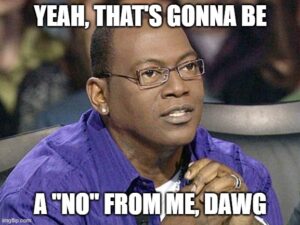When we work with healthcare organizations (HCOs) on their marketing and content strategies, our clients are typically concerned with identifying their audiences. But competition in the healthcare and life sciences industry is heating up. And HCOs have a problem with consumer trust they historically haven’t had to face as much as other industries. So it’s important to understand who your organization is and who it aspires to be. Brand archetypes are a way to help you do that.
Researchers have delved deep into brand identification and experiences to figure out the personality traits consumers identify with from the organizations they love. Some of the most-referenced research comes from the book “The Hero and the Outlaw: Building Extraordinary Brands Through the Power of Archetypes,” by Margaret Mark and Carol S. Pearson. It’s a text that can help you shape your efforts to resonate with your audience. For a quick rundown, check out this explanation of the 12 brand archetypes.
These brand archetypes are powerful representations of most consumer-facing organizations today. But only some of them are a good fit for HCOs. Let’s look at which archetypes are the best choices if you’re trying to shape your organization’s image, as well as which options you should avoid at all costs.
The best brand archetypes for healthcare organizations
The following brand archetypes likely are the strongest options for your HCO:
The Caregiver
The Caregiver focuses on empathy, consistency, trust and support. It wants to help its audience and protect them (much like caregivers do in the healthcare setting). The Caregiver is altruistic and cares about serving others.
In most cases, the Caregiver should be the default choice for your HCO if you don’t already have a strong brand identity or if your competitors don’t already own this space in your service area. Your audience members probably see themselves as the main character in their personal narratives. What your role as the Caregiver will do is establish your organization as the logical companion/sidekick to them on their personal journeys.
Related: Healthcare Storytelling Part 2: Improve Your Patient Stories With the Hero’s Journey
The Sage
Brands that embody the Sage archetype focus on their organizations’ wisdom, intelligence, the discovery process and the pursuit of truth. The Sage can be a good fit for healthcare in certain cases, such as if you want to emphasize your HCO’s expertise in:
- Academia
- Instruction/teaching/medical residency
- Research
Some natural fits for organizations that focus on these areas include teaching hospitals, life sciences organizations and institutes with a heavy emphasis on clinical trials, among others.
But the Sage does run the risk of coming across as cold or distant for organizations that need to appeal to healthcare consumers on a personal level. It’s important to decide who the audience is and the kinds of communication they prefer before settling on the Sage.
The Everyman
The Everyman (though it really should be called “the Everyperson”) focuses on being relatable, understandable, common and real. You want to have the Everyman over for dinner or go get a beer with him. He feels like a neighbor or a friend. The Everyman can be a good fit if your HCO is in a crowded service area and you have competitors that already have a lock on the Caregiver and Sage brand archetypes — or if those are just not good fits for your organization. You do want to position your organization as the caring, empathetic, supportive option for your consumers, though, which is why the Caregiver tends to be the stronger choice.
We’ve seen clients use the Everyman archetype effectively in service areas where their competitors have a well-known reputation for academic affiliation but also have the reputation for being inaccessible and distant to their patients. It can set your HCO up as the accessible, approachable alternative.
Give these brand archetypes a hard pass
Now let’s go through the other brand archetypes and learn why they’re probably not a good idea for your organization.
The Innocent
The Innocent champions the ideals of innocence (shocker), purity, faith and optimism. Those are positive, wholesome traits, and there’s nothing wrong with those. But the archetype isn’t a good fit for an HCO.
Healthcare at its core is about understanding a medical need — with the patient, with a group of patients, with a population or others — and working to correct it. Though HCOs can serve people with the mindset of the Innocent, such as children, having that outlook for your organization would likely paint you as being naïve, impractical and unprepared for the type of planning and decision-making that come with the territory.
The Explorer
The Explorer is a sturdy, self-reliant sort who seeks a better world and is unconstrained by the bounds of society. Think about rugged individualism. Think of Teddy Roosevelt! Now he was an Explorer.
The problem is that Teddy Roosevelt probably isn’t the kind of guy you’d want as the example for your HCO. Healthcare relies on teams of people working together — care teams, research teams, plan administrators and others — with a common goal and purpose. Those simply don’t align with the aims of an Explorer.
There are some messaging strategies that can help you appeal to healthcare consumers who fit within the Explorer archetype. But as for the face you present to the public, this isn’t a good fit.
The Outlaw
With a name like the Outlaw, do I really need to spell it out? OK, just in case: The Outlaw is about anarchy and disdain for authority. The Outlaw wants to stick it to the man. The Outlaw is a rebel.
None of that is a good fit for healthcare. The healthcare and life sciences industry depends on trusted, proven systems to deliver good outcomes. And it depends on cautious optimism in those systems and their related processes.
The Outlaw is great for a Harley-Davidson ad. For your hospital or health plan, not so much. If there’s one archetype that’s the polar opposite of what HCOs should see in themselves, it’s the Outlaw.
The Magician
The Magician loves imagination, wonder, transformation and belief — and inspiring those in its audience members. This archetype has boundless optimism and wants you to change yourself to realize the change you want to see in the world. Well, that all seems cool, right?
I mentioned “cautious optimism” before for healthcare. This is optimism to the other extreme — blind and unrestrained. Healthcare works in the real world, grounded by realism. The Magician seeks to bring the fantastic realms of the imagination to life. This isn’t the kind of image you want to project to your consumers.
The Hero
We’ve talked about the Hero’s Journey before — not only me but also my colleague Marlana Voerster. However, the Hero brand archetype is a little different. The Hero focuses on grit, determination, willpower and courage. (Think John Wayne or Batman.)
In some ways, these traits seem like a good fit for healthcare. You may even think it’s a good fit for your HCO. But the healthcare and life sciences industry is moving away from battle-focused messaging and mindsets and embracing a supportive, empathetic and understanding frame of mind that’s at odds with the Hero archetype. Going back to John Wayne and Batman — you don’t think of those guys as the caring, empathetic, supportive types. You think of those as the types who punch the bad guy in the mouth. That works for some organizations, but it doesn’t work in healthcare.
The Lover
The Lover represents beauty, love (naturally), relationships and sensuality. Brands that gear themselves toward the Lover archetype focus on aesthetics and sensory inputs. How does this thing look? Isn’t it nice? It smells wonderful. You could have that too! It’s most often the choice of brands related to romance and physical appeal, such as makeup and fragrance companies.
While there’s nothing wrong with those goals, they’re kind of at cross-purposes with healthcare and life sciences, which is focused on being supportive, empathetic and understanding. The Lover has some common ground, but the goals are too disparate to make this a good option.
The Jester
The Jester, if the name weren’t enough of a clue, is all about the laughter. Humor, comedy, joy and the absurd are in the Jester’s wheelhouse. Brands that gravitate toward this archetype are focused on making people have fun.
When’s the last time you as a consumer thought about the hospital, your health insurance or your medical device supplier as funny? Consumers who interact with HCOs aren’t about having fun in the moment. They want to identify or avoid a problem relating to their help, and then they want to get help with that problem.
A serious, determined nature is a must for an HCO. Your organization needs to project trustworthiness and confidence. The Jester is the wrong choice for that.
The Ruler
The Ruler brand archetype is about power, control and leadership. People turn to the Ruler when they want an authority figure. People listen to the Ruler when they speak, and their way is the Right Way. It appeals to consumers who are in or want to be in positions of power.
While there are those in healthcare organizations who naturally embody the Ruler archetype, that’s not the image you want to project to your consumers. Healthcare providers and payers already have an image in many cases of being bossy or authoritarian. And it’s not what consumers want. They want HCOs to be helpful, supportive and empathetic, not dictatorial. That’s why the Ruler should get a “No” vote from your organization.

The Creator
The Creator archetype invites consumers to focus on their imagination, innovation, creativity and self-expression. It works best for brands that want to encourage consumers’ vision — similar to the Magician but in a more tactical, task-oriented way.
There are some niche cases in which you could play upon a Creator identity in healthcare. We can see this appealing to others within the industry, such as in life sciences organizations or when creating messaging for researchers.
But for messaging strategies geared toward healthcare consumers, they’re expecting HCOs to provide guidance and support in line with established systems and processes — not blazing a creative, untested trail. As a creative person, I appreciate imagination, but I wouldn’t necessarily feel confident if I were hearing about it from my healthcare provider or health plan.
Find your voice, and speak to your healthcare consumers
Identifying who your HCO is in terms of the personality you project is crucial for forging the long-term relationships that will be vital in the era of healthcare consumerism. Your brand archetype can also play a key role in your work for consumer personas and journeys. Our team of healthcare strategists can help you home in on the messaging tactics that are most effective for your role and what your personas will expect from someone in that role.
We’re here to help you achieve results with your healthcare strategy and messaging. Contact us to learn more about our solutions.


Would there be more freedom in archetypes for a Licensed Clinical Social Worker (LCSW) who wants to build a mental health brand?
Possibly! There are some potential scenarios in which the Magician, the Explorer or the Hero could be a good fit for mental health.